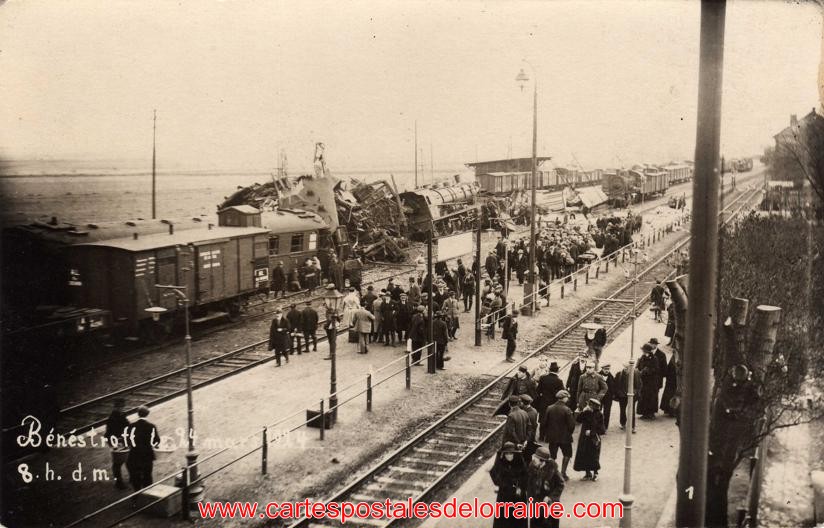Bénestroff
Bénestroff ( German Bensdorf ) is a commune with 526 inhabitants (as of January 1, 2011 ) in the department of Moselle in the Lorraine region. It belongs to Canton Albestroff and the Local Government Association Saulnois.
Geography
Bénestroff located in Saulnois, eight kilometers west of the cantonal capital of Albestroff.
History
The place was (52 BC to the 5th century) inhabited in Gallo-Roman times.
In the 16th century Vergaville was the seat of an arch-priest of the diocese of Metz, whose administrative territory belonged to the parish of Bénestroff. The village belonged to the Bénestroff Bailliage of Vic- sur- seille that the diocese of Metz was subject also to the French Revolution ( 1789-1799 ).
1793 received Bénestroff as Benestorff in the wake of the French Revolution the status of a municipality and in 1801 the right to local self-government. It belonged from 1801 to 1871 to the former department of Meurthe, which was renamed in 1871 in Meurthe -et -Moselle. 1871, the community was incorporated into the newly created National Rural Alsace-Lorraine by the German Empire due to territorial changes through the course of the German - French War ( 1870-1871 ). The National Rural Alsace-Lorraine existed until the end of World War I (1914-1918) and was subsequently dissolved. Bénestroff was at that time in the department of Moselle, this change was also maintained in 1918, when France was awarded Moselle again.
Demographics
Coat of arms
The coat of arms of the municipality corresponds to the crest of the Bénestroff family who owned the fief of the village in the Middle Ages. It is red, with three silver chevrons, on a golden plate with a black cross of St. Andrew.
Traffic
1885 Bénestroff station was built, which was an important stopover on the route from Metz to Strasbourg.







.svg/2000px-Blason_de_la_ville_de_B%2525C3%2525A9nestroff_(Moselle).svg.png)